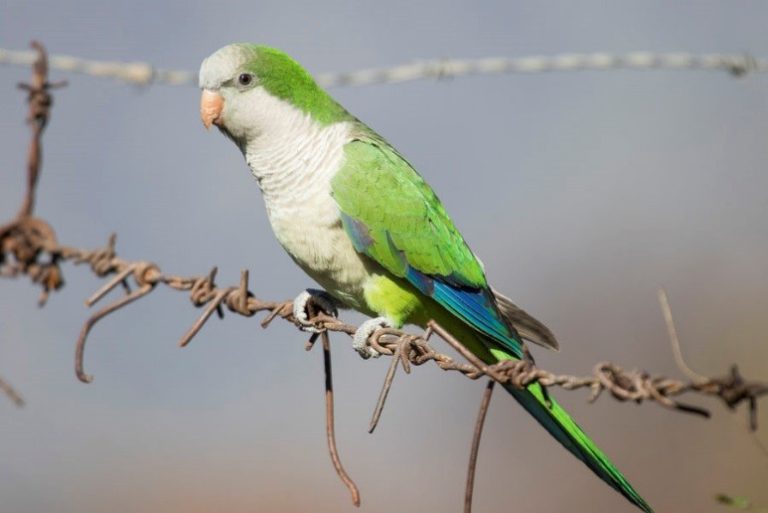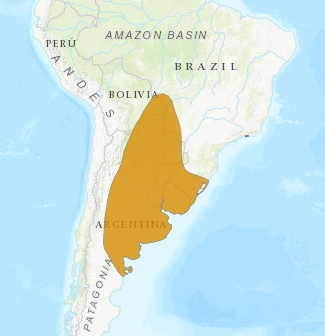Birdfinding.info ⇒ Common to locally abundant across much of its natural range, especially in central Argentina and Uruguay, where its bulky, globular, stick-pile nests are a familiar feature of the landscape. In the U.S., ubiquitous along both coasts of Florida, and increasingly so in the large cities of Texas. In Europe, especially well established and widespread in Spain.
Monk Parakeet
Myiopsitta monachus
Temperate and tropical plains of South America; introduced in North and Middle America and southern Europe. Occurs in grassland, scrub, savanna, open woodland, various types of agricultural land, and settled areas. Thrives in association with humans. Lives colonially in large stick-cluster nests.
Natural range extends from eastern Bolivia and southern Mato Grosso south through the Pantanal, Chaco, and Pampas regions to northern Patagonia.
Has been introduced widely across the Americas and Europe. These introductions are difficult to catalogue because local flocks often persist for several years, then disappear (in many cases due to active pest control measures). Introduced populations that seem firmly established and expanding include those in:
New York City area: from northern New Jersey east along the southern shore of Long Island and coastal Connecticut.
Florida: from Hernando Beach, Orlando, and Cape Canaveral south to Key West.
Texas: mainly metropolitan Dallas, Austin, Houston, San Antonio, Corpus Christi, and the lower Rio Grande Valley.
Mexico: patchily across most of the country from Tijuana to Chiapas, but especially the central plateau from Guadalajara east to Puebla.
Puerto Rico: throughout the coastal lowlands.
Central Chile: Valparaíso and Santiago, spreading south.
Canary Islands: Tenerife, Gran Canaria, Fuerteventura, and Lanzarote.
Iberian Peninsula: nearly throughout, but especially greater Madrid and the Mediterranean coast; also on Mallorca.
Italy: patchily from Milan and Venice to Rome and Bari.
Israel: from the Sea of Galilee to the Dead Sea, but especially along the Mediterranean coast.
Also established in several additional metropolitan areas: Chicago, New Orleans, Rio de Janeiro, London, Amsterdam, the Hague, Rotterdam, Brussels, Casablanca, and Athens.
Identification
Distinctive and unlikely to be confused with any other species. Mostly green with extensively ashy-gray forehead, throat, and breast. Deep blue tones in flight feathers are conspicuous in flight.
The only strongly similar species is the Cliff Parakeet, which has a very limited range in the Bolivian Andes and does not overlap with Monk.

Monk Parakeet. (Hidalgo, Texas; January 7, 2017.) © Bradley Hacker
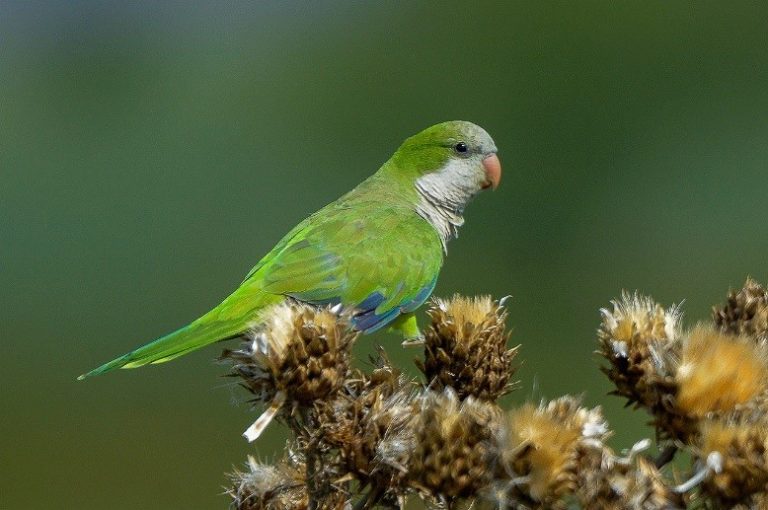
Monk Parakeet. (Dique Ingeniero Roggero Natural Protected Area, Buenos Aires, Argentina; January 16, 2015.) © Javier Presas
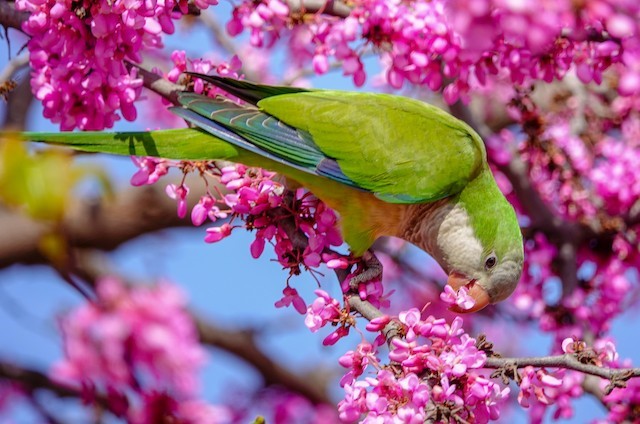
Monk Parakeet. (Citadel Park, Barcelona, Spain; April 1, 2019.) © Larry Theller
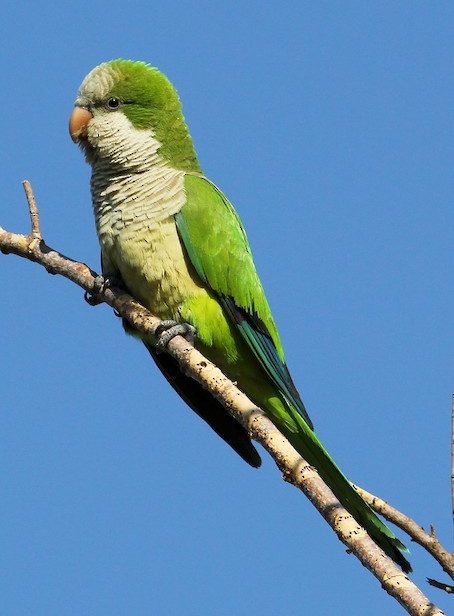
Monk Parakeet. (Rose Hill Cemetery, Corpus Christi, Texas; May 7, 2017.) © Jason Leifester
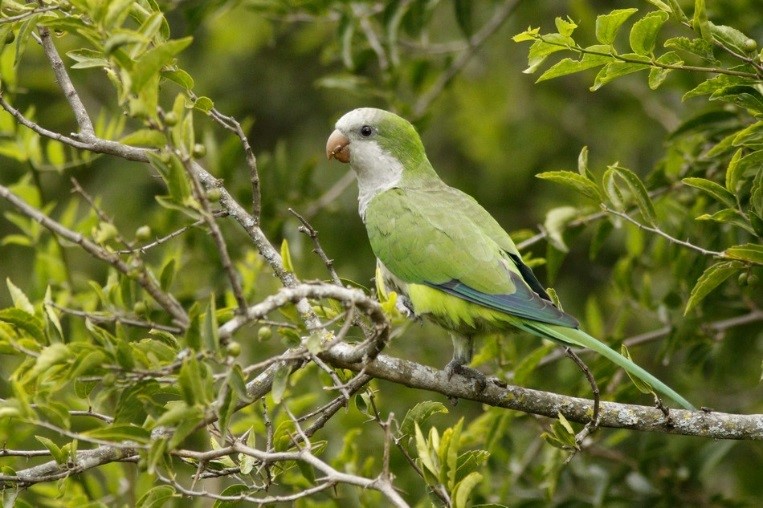
Monk Parakeet. (Mayu Sumaj, Córdoba, Argentina; February 26, 2018.) © Jorge Schlemmer

Monk Parakeet. (Parque Polvoranca, Madrid, Spain; September 8, 2017.) © Jorge García Mora

Monk Parakeet. (Necochea, Buenos Aires, Argentina; January 29, 2015.) © Orlando Oses
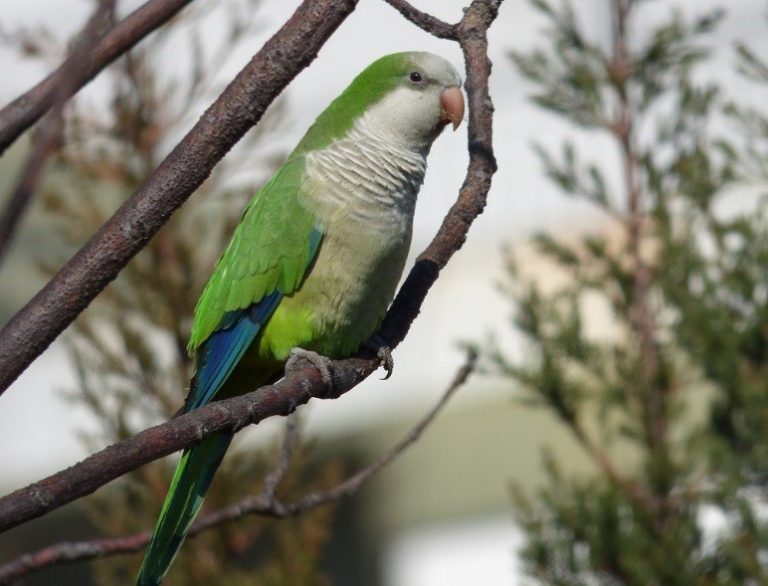
Monk Parakeet. (Ramos Mejía, Buenos Aires, Argentina; August 31, 2014.) © Dolores Fernandez
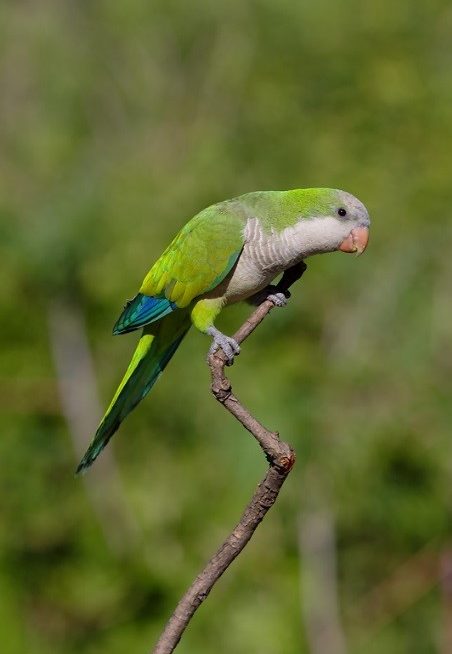
Monk Parakeet, striking a characteristically inquisitive posture. (Costanera Sur Ecological Reserve, Buenos Aires, Argentina; December 11, 2010.) © Jose Luis Fernandez Guaraz
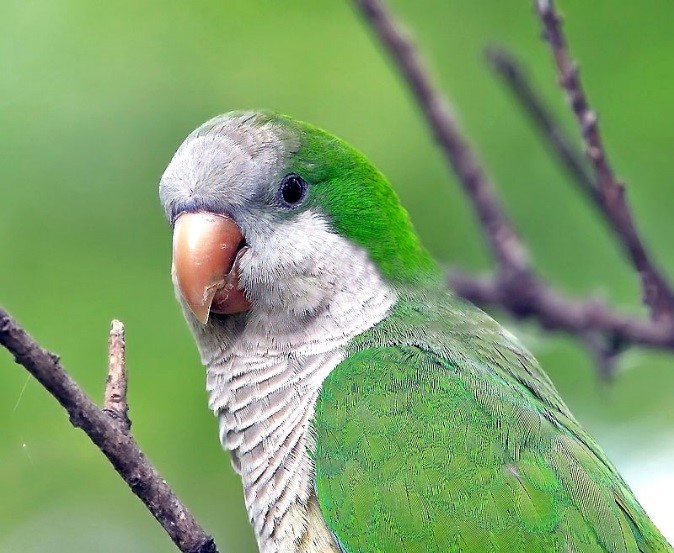
Monk Parakeet. (Costanera Sur Ecological Reserve, Buenos Aires, Argentina; December 11, 2009.) © Jose Luis Merlo
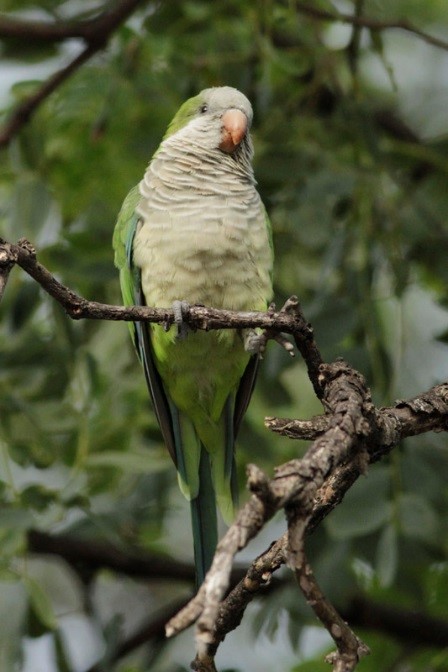
Monk Parakeet. (Costanera Sur Ecological Reserve, Buenos Aires, Argentina; Febraury 21, 2015.) © J. Simón Tagtachian

Monk Parakeet—note turquoise undertail. (Punta del Agua Private Reserve, San Luis, Argentina; August 5, 2018.) © Emilio Martin Perez
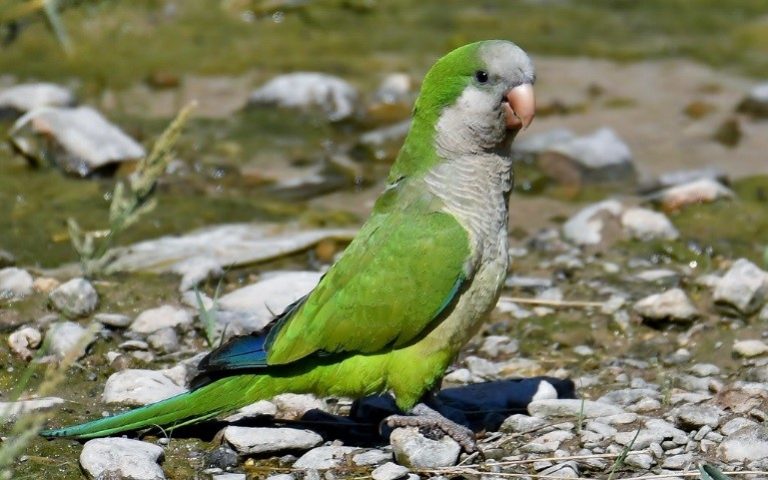
Monk Parakeet. (Cambrils, Catalonia, Spain; July 7, 2018.) © Aidanos
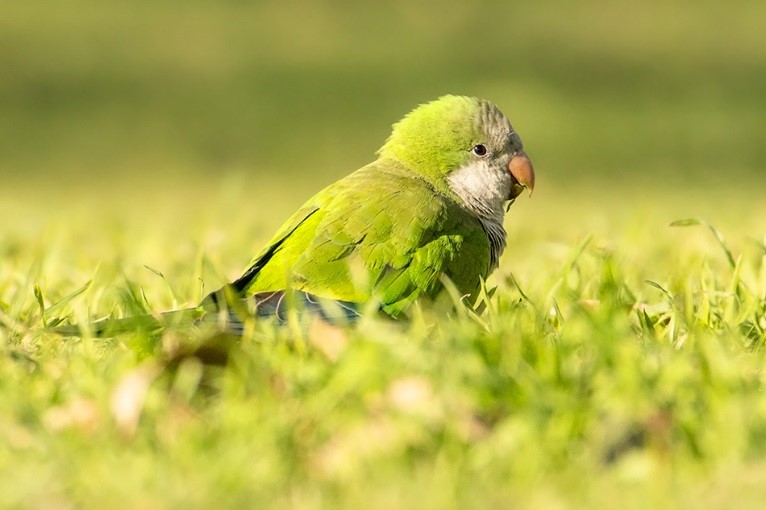
Monk Parakeet. (Vicente López Ecological Reserve, Buenos Aires, Argentina; June 7, 2018.) © Javier Presas
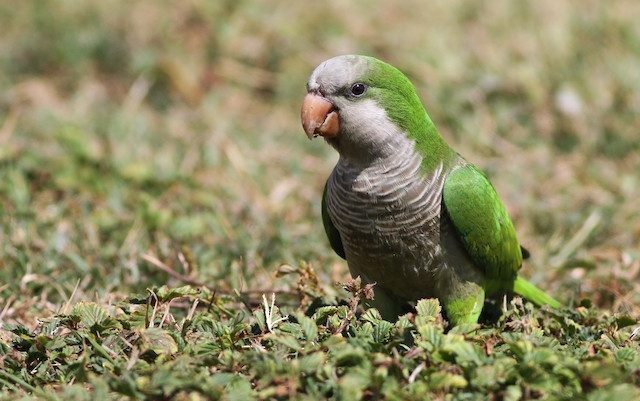
Monk Parakeet. (Old San Juan, Puerto Rico; March 20, 2017.) © Alex Lamoreaux
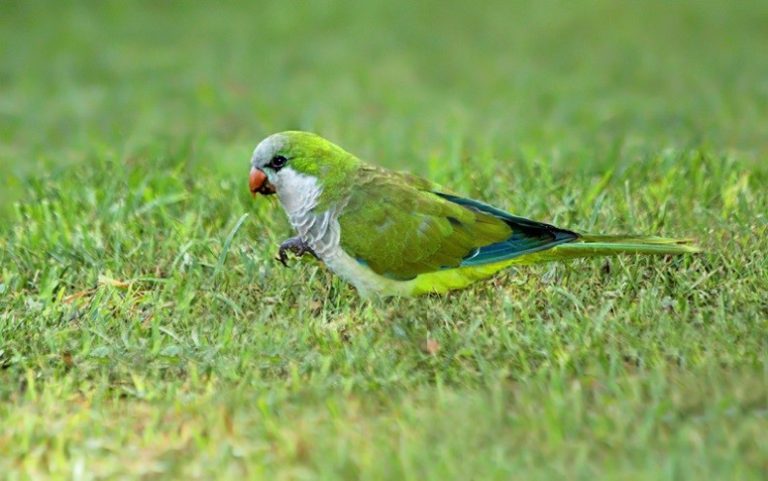
Monk Parakeet. (Palermo, Buenos Aires, Argentina; February 7, 2015.) © Eduardo Nadal
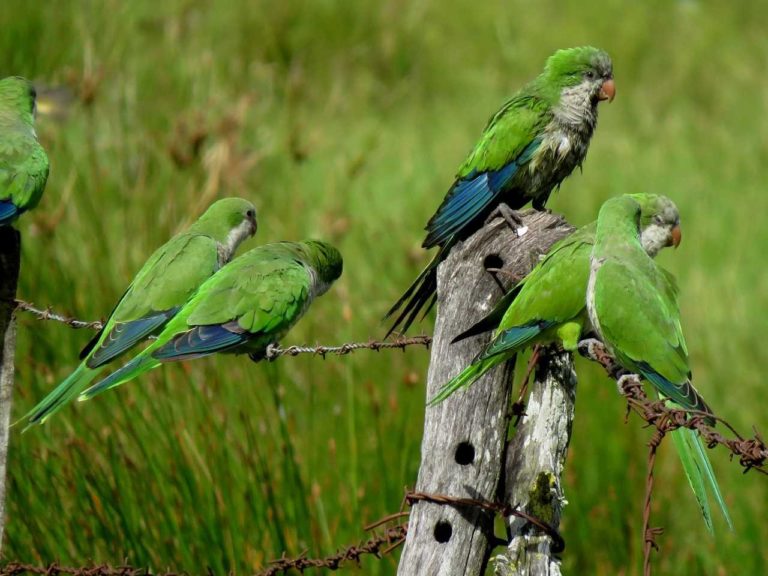
Monk Parakeets often gather on wire fences. (Unzué Floristic Reserve, Entre Ríos, Argentina; March 2, 2014.) © Gustavo Puente

Monk Parakeets, clustering on an iron fence. (Costanera Sur Ecological Reserve, Buenos Aires, Argentina; January 22, 2017.) © Diego Carus
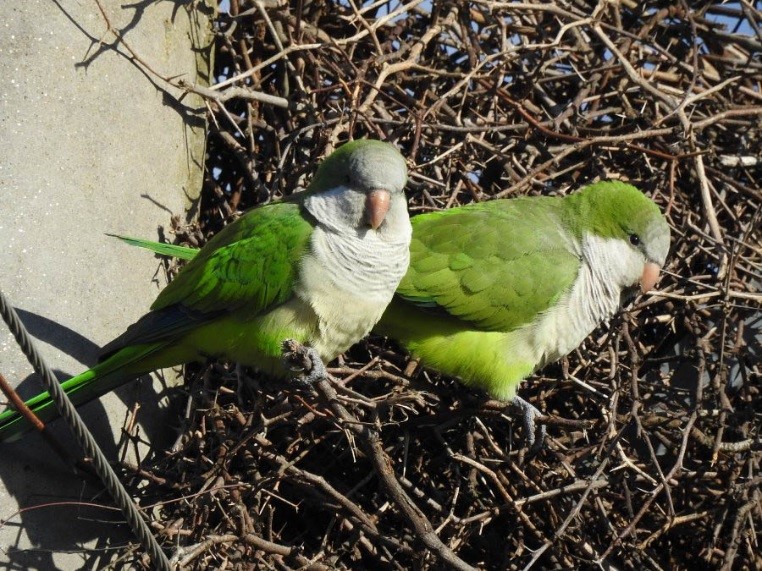
Monk Parakeets, at nest. (Paraje El 17, Santa Fe, Argentina; June 2, 2018.) © Jorgelina Alesso

Monk Parakeets, clustering on a bush. (Miramar, Córdoba, Argentina; May 19, 2018.) © Jorge Schlemmer
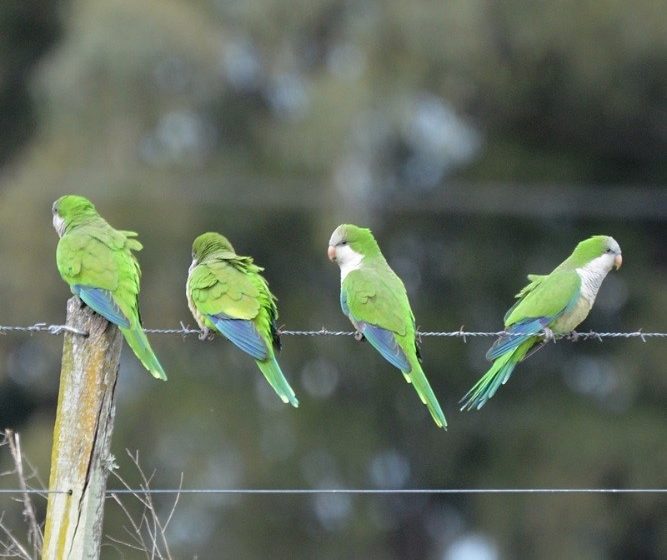
Monk Parakeets, perched on a fence wire. (Los Toldos, Buenos Aires, Argentina; October 7, 2015.) © Diego Villalba
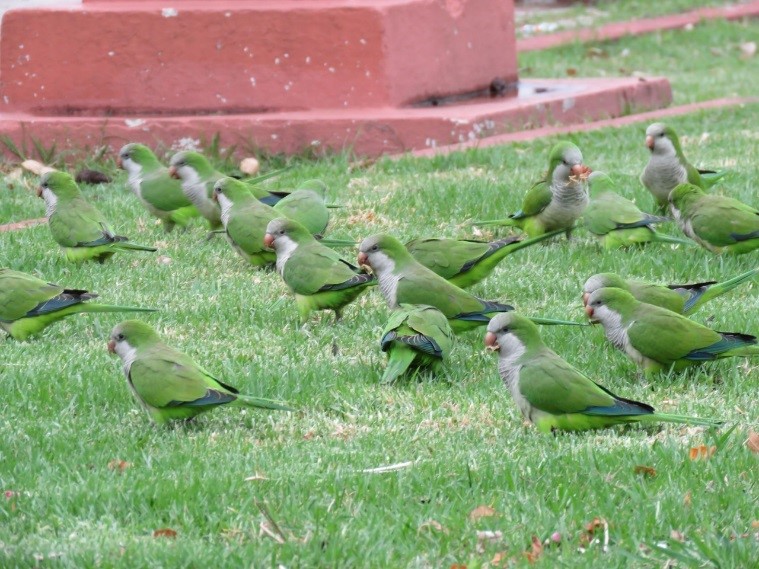
Monk Parakeets are often found in flocks on urban lawns. (Gualeguaychú, Entre Ríos, Argentina; March 4, 2018.) © Rodolfo Julio Velazquez
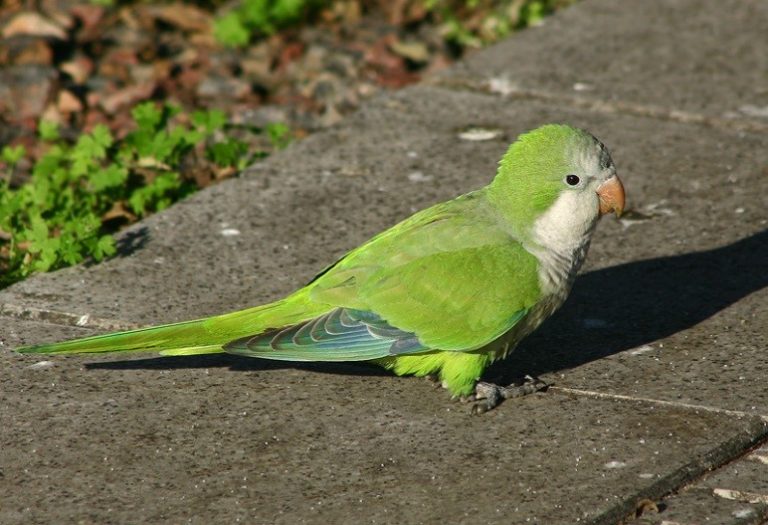
Monk Parakeet, on an urban sidewalk. (Buenos Aires, Argentina; September 16, 2005.) © Luis Cesar Tejo
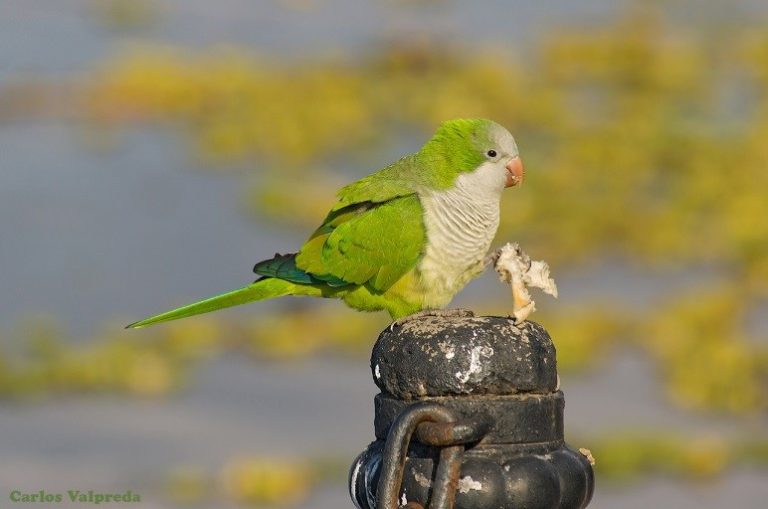
Monk Parakeet. (Costanera Sur Ecological Reserve, Buenos Aires, Argentina; July 18, 2015.) © Carlos Valpreda
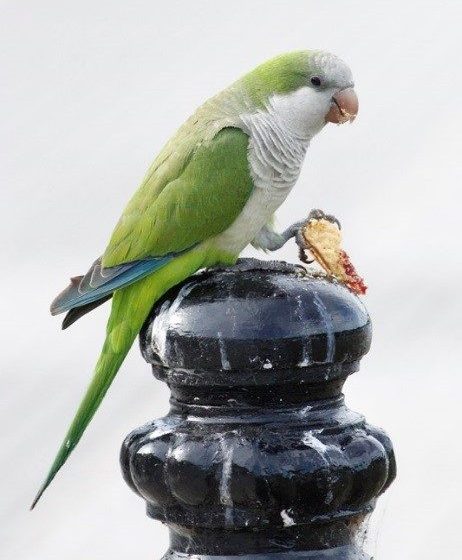
Monk Parakeet, eating a sandwich. (Costanera Sur Ecological Reserve, Buenos Aires, Argentina; January 2, 2016.) © J. Simón Tagtahcian

Monk Parakeet, foraging for crackers. (Costanera Sur Ecological Reserve, Buenos Aires, Argentina; February 10, 2018.) © J. Simón Tagtahcian

Monk Parakeet, hoping for bread. (Lago Regatas, Buenos Aires, Argentina; September 9, 2017.) © Diego Carus
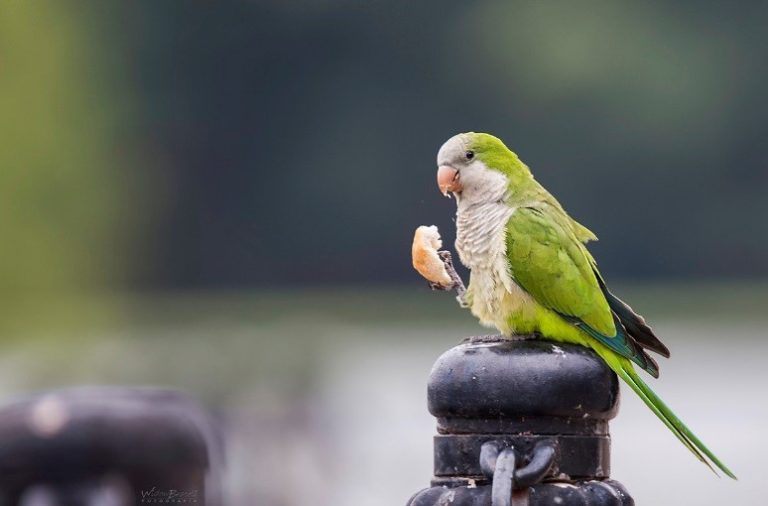
Monk Parakeet, enjoying a crust of bread. (Costanera Sur Ecological Reserve, Buenos Aires, Argentina; March 14, 2015.) © Tomas Widow
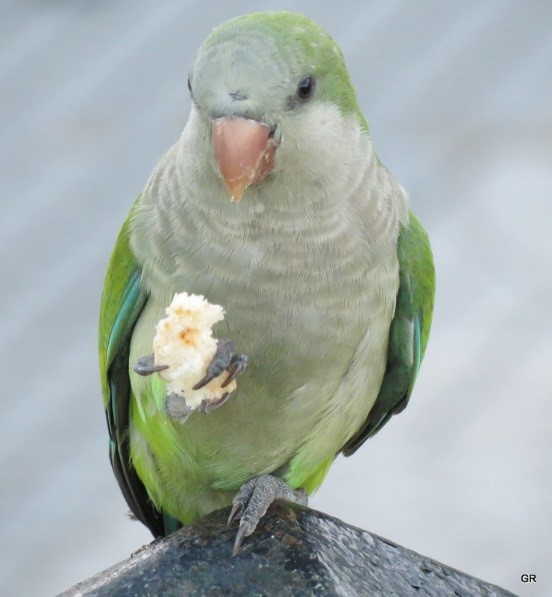
Monk Parakeet. (Costanera Sur Ecological Reserve, Buenos Aires, Argentina; February 7, 2015.) © Gustavo Ramos

Monk Parakeet, probably wondering if the photographer has any bread. (Costanera Sur Ecological Reserve, Buenos Aires, Argentina; April 19, 2015.) © Diego Carus

Monk Parakeet, showing deep blue tones in its wings. (Riviera del Sol, Spain; May 5, 2018.) © Phil Gower
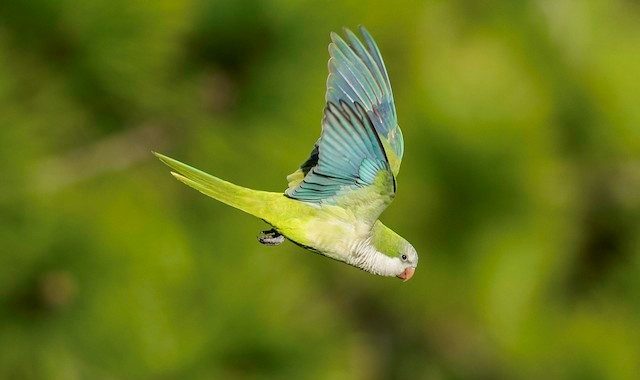
Monk Parakeet. (Markham Park, Sunrise, Florida; February 2, 2017.) © David Hall
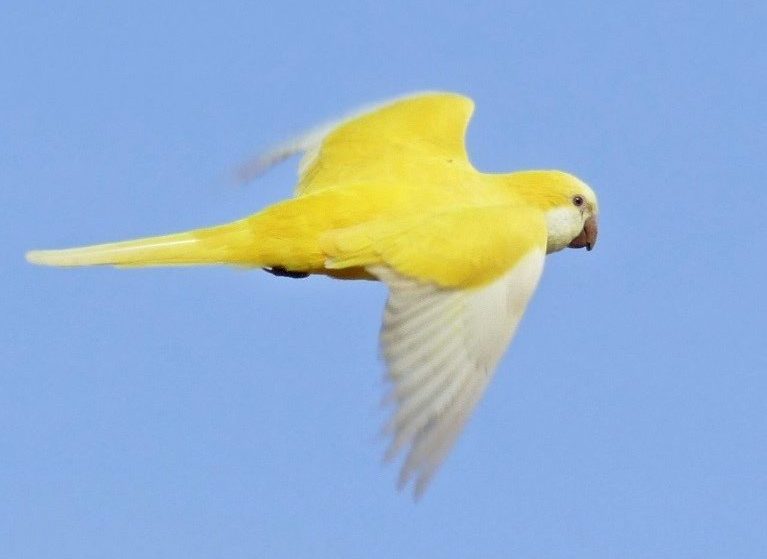
Monk Parakeet, an unusual leucistic individual. (San Jerónimo del Sauce, Santa Fe, Argentina; August 5, 2018.) © Gustavo Fernando Durán
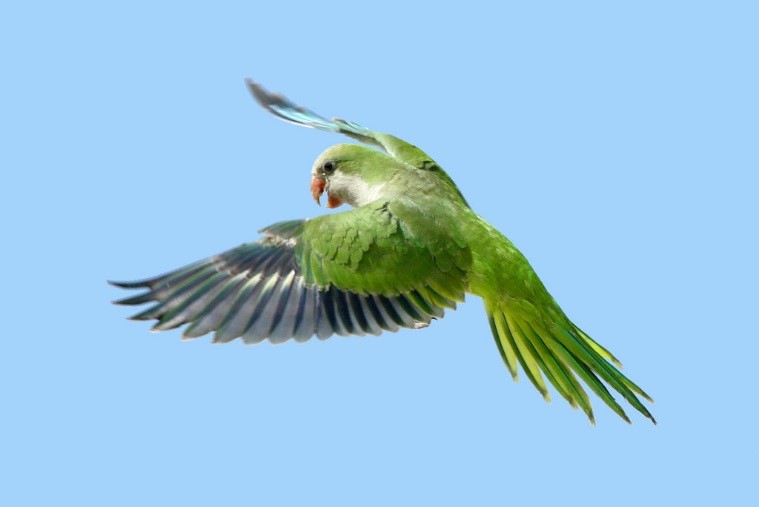
Monk Parakeet. (White Rock Lake, Dallas, Texas; October 1, 2013.) © Texas Eagle
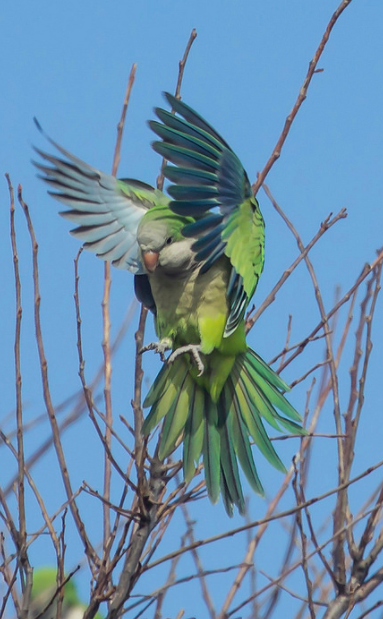
Monk Parakeet, showing the full range of colors in its flight and tail feathers. (Chicago, Illinois; January 24, 2016.) © Ethan Ellis
Lives colonially in large nests assembled from thousands of sticks clumped around the forks of trees or on utility poles.
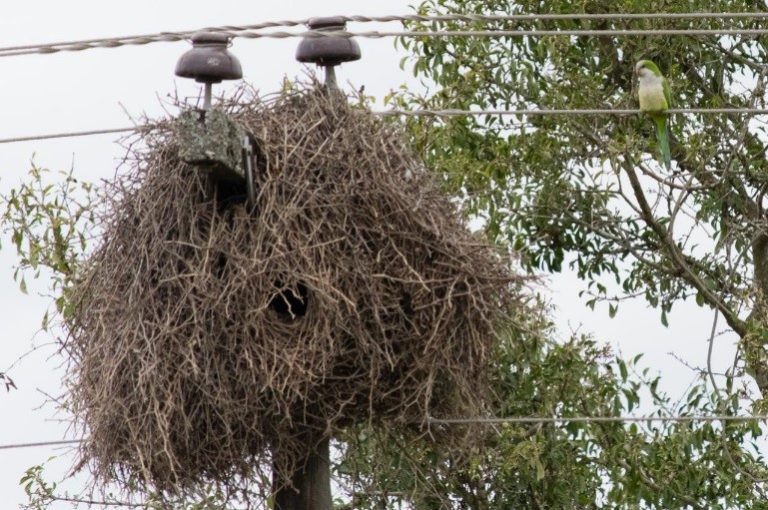
Monk Parakeet, on wire beside nest. (Machagai, Chaco, Argentina; July 15, 2018.) © Mauro Méndez-Renedo
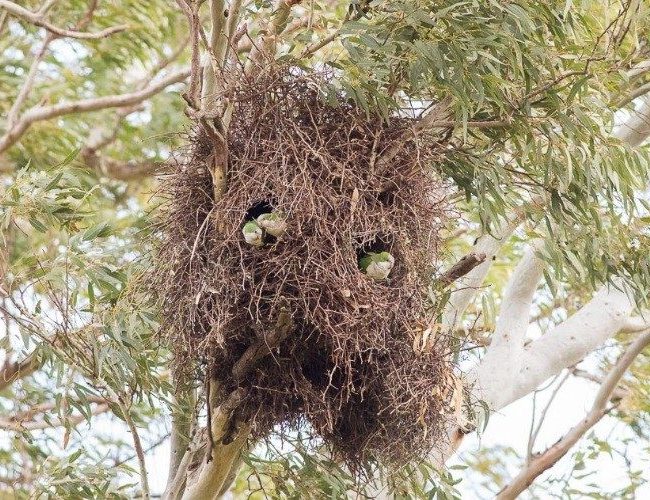
Monk Parakeets, at nest. (Miramar, Córdoba, Argentina; June 17, 2017.) © Jorge Schlemmer

Monk Parakeets, attending large, two-structure nest. (Chicago, Illinois; October 17, 2017.) © Eric Ginsburg
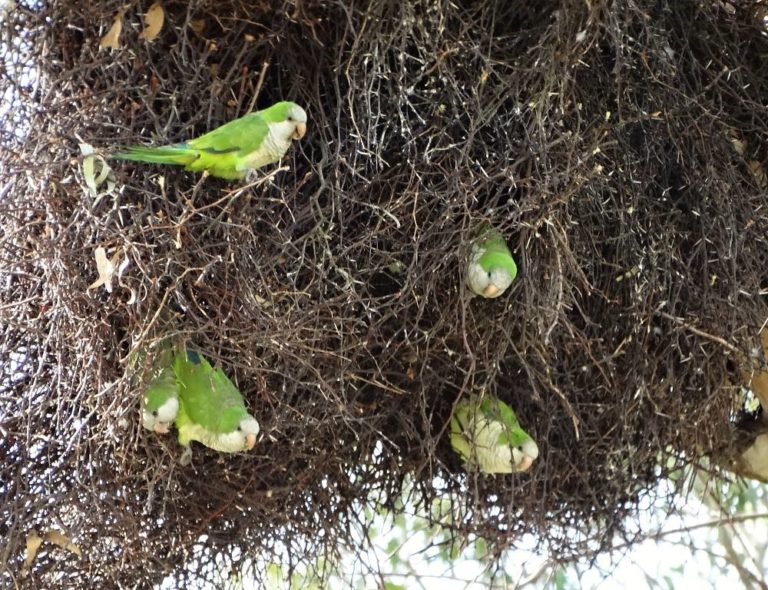
Monk Parakeets, at nest. (Ceibas, Entre Ríos, Argentina; February 15, 2015.) © Dolores Fernandez

Monk Parakeets, at nest. (La Malvina Urban Nature Reserve, La Pampa, Argentina; March 8, 2015.) © Clarisa Pastor
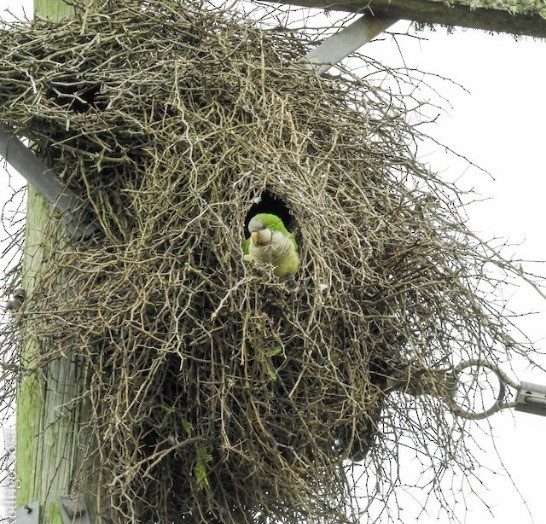
Monk Parakeet, in nest attached to utility pole. (Laishi, Formosa, Argentina; October 13, 2017.) © Carlos Rodrigo Sosa
Voice. Calls vary, but most share a throaty, vibrato quality. Also gives higher-pitched squeaky yelps reminiscent of a small dog:
Notes
Polytypic species consisting of three recognized subspecies. Traditionally considered conspecific with Cliff Parakeet.
References
Alderfer, J., and J.L. Dunn. 2014. National Geographic Complete Birds of North America (Second Edition). National Geographic Society, Washington, D.C.
BirdLife International. 2018. Myiopsitta monachus. The IUCN Red List of Threatened Species 2018: e.T45427277A132189848. http://dx.doi.org/10.2305/IUCN.UK.2018-2.RLTS.T45427277A132189848.en. (Accessed May 11, 2019.)
Collar, N., and P. Boesman. 2018. Monk Parakeet (Myiopsitta monachus). In Handbook of the Birds of the World Alive (J. del Hoyo, A. Elliott, J. Sargatal, D.A. Christie, and E. de Juana, eds.). Lynx Edicions, Barcelona. https://www.hbw.com/node/54677. (Accessed July 28, 2018.)
eBird. 2019. eBird: An online database of bird distribution and abundance. Cornell Lab of Ornithology, Ithaca, N.Y. http://www.ebird.org. (Accessed May 11, 2019.)
EcoRegistros. 2019. Registros Ecológicos de la Comunidad. Cotorra. http://www.ecoregistros.org/ficha/Myiopsitta-monachus. (Accessed May 13, 2019.)
Forshaw, J.M. 2010. Parrots of the World. Princeton University Press, Princeton, N.J.
van Perlo, B. 2009. A Field Guide to the Birds of Brazil. Oxford University Press, Oxford.
WikiAves, Caturrita, http://www.wikiaves.com.br/caturrita.
